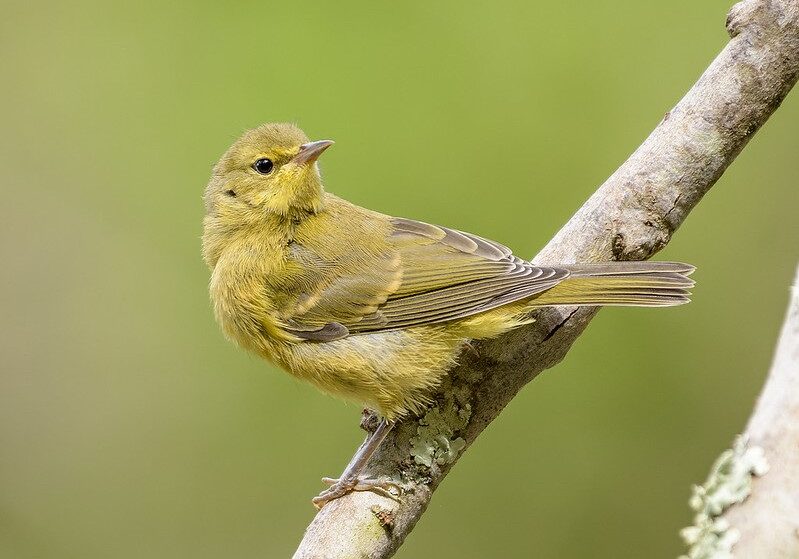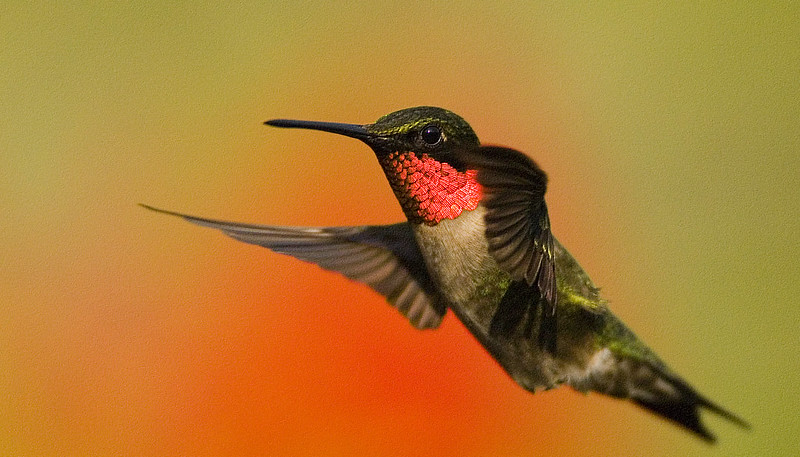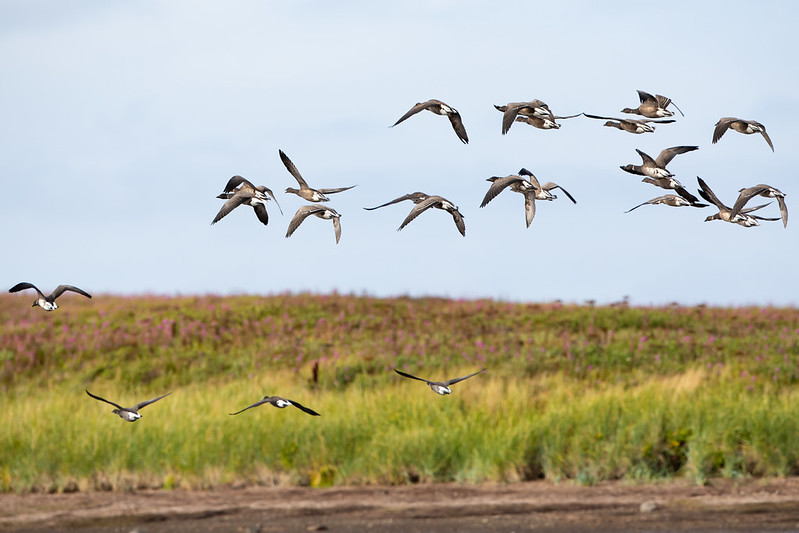
Spring has officially arrived. That means budding flowers, sprouting plants, and our favorite part of the season, spring migration! Birds across North America are moving from wintering grounds in the southern hemisphere to nesting grounds further north, some as far as the Arctic.
As birds migrate, they stop along the way to rest and refuel in backyards, orchards, farms, wetlands, prairies, and a host of other habitats. These stops are crucial to their migration and long-term health. But stopping comes with risks – from predators, collisions with windows, lights, and more. If you’re interested in helping ensure birds have a safe place to land, here are a handful of things you can do:
1. Keep Cats Inside
Cats are bird predators that kill approximately 2.4 billion birds every year in the U.S. Keeping them indoors, or in a catio, not only protects birds, but it also protects cats from outdoor threats like cars, predators, and disease. Learn more on the American Bird Conservancy website: https://abcbirds.org/program/cats-indoors/.
2. Leash Up Dogs at the Beach
Who doesn’t love a beach day? While dogs may enjoy a beach swim or a roll in the sand, keeping them leashed is key to prevent them from chasing migratory birds that are resting and refueling along the shoreline. It also helps protect beach-nesting birds and their chicks. Or, skip the beach during peak migration and nesting times and use the opportunity to explore a new dog park or dog-friendly trails.
3. Treat Windows to Prevent Window Strikes
According to the American Bird Conservancy, up to 1 billion birds die each year in the United States from colliding with glass. Almost half of those collisions occur on home windows and low-rise buildings. Treating windows with stickers, washable paint, or other window appliques can help reduce window strikes and bird fatalities.
4. Turn Off the Lights at Night
Many birds migrate under the cover of darkness. Bright city lights can confuse them and attract them in, leading to window collisions or taking them off course. The American Bird Conservancy recommends keeping lights off from 11 p.m. until the following afternoon to help the birds we love reach their next stop safely.

5. Plant Native Species & Pollinator Gardens
As towns and cities continue to urbanize, birds may lose access to the native plants they rely on for food and shelter. By planting and growing native plants, we can help provide critical resources for birds and attract a diversity of species – a win-win if you’re an avid birdwatcher like us!
6. Collect a Duck Stamp
A quick and easy way to contribute to bird habitat conservation, and thus migratory birds, is by supporting the Federal Duck Stamp program. These are conservation revenue stamps that feature incredible duck art and generate funds through their sales. Overall, 98% of the funds made through this program go directly to help the USFWS acquire and protect wetland habitat and to support the National Wildlife Refuge Program. This means more migratory bird habitats are protected across the country. Learn more: https://www.fws.gov/service/duck-stamps.
7. Share Space! Keep a Safe Distance
As tempting as it can be to get close to birds, especially rare migrants or young chicks, it is an additional stressor for birds already pushing their bodies to the max. Keeping a recommended 50 yards from nesting birds can help birds thrive during migration and nesting seasons. Plus, it’s a great excuse to use your binoculars!
8. Spread the Knowledge
Last but certainly not least, spread the knowledge! Tell someone about your favorite bird, the best local places to see birds, and help create another bird-lover. And don’t forget to share this list – so others can help protect migratory birds, too.

Sources:
- https://abcbirds.org/thirteen-tips-spring-migration/
- https://www.pbshawaii.org/insights-on-pbs-hawai%CA%BBi-what-to-do-about-feral-cats/
- https://www.ocregister.com/2023/10/03/why-enclosed-outdoor-cat-areas-or-catios-might-be-what-you-and-your-pet-need/
- https://abcbirds.org/program/cats-indoors/
- https://abcbirds.org/glass-collisions/
